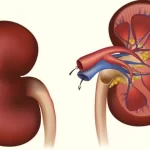What is Penile Cancer
Penile Cancer is a disease in which malignant (cancerous) cells are formed in the tissues of the penile. Penile cancer is usually found on the front skin of the penile but it can also occur on the backside. Almost all penile cancers begin in the skin of the penile. It starts from the skin of the penis and can go up. It is a rare type of cancer but can be treated, especially if it is diagnosed early.
Symptoms of penile cancer
The signs and symptoms below do not always mean that a man has penile cancer. Many other conditions are likely to be caused. However, if you have any of them, see a doctor immediately so that their cause can be discovered and treated if needed. The sooner a diagnosis is made, the sooner you can begin treatment, and the better it is likely to work.
Skin changes
The first sign of penile cancer is most often a change in the skin of the penis. It is most likely on the forearm (tip) of the penis or the forearm (in uncontrolled males), but it can also occur on the shaft. These changes may include:
- itching
- jealousy
- the leak
- The color change of the penile
- Penile skin thickness
- bleeding out
- redness
- A knot
- An ulcer (wound) that can bleed
- A red, velvety rash under the foreskin
- Small, crusty bumps
- Flat, blue-brown growth
- Smelly discharge (fluid) or bleeding under the foreskin
- Swelling of lymph nodes between abdomen and thigh
Wounds or lumps from penile cancer usually do not hurt, but they can occur. You should see a doctor if you find any new growth or other abnormalities on your penis, even if it is not painful. Any changes that do not improve, or worsen, in about 4 weeks should be examined by a doctor.
Swelling
Swelling at the end of the penis, especially when the foreskin is narrowed, is another possible sign of penile cancer. It can be difficult to pull the foreskin back.
Lump under the skin in the groin area
If cancer spreads through the penis, it often first travels to the lymph nodes in the groin. It can swell those lymph nodes. Lymph nodes are collections of immune system cells. Generally, they are bean-shaped and can be barely felt at all. If they are swollen, the lymph nodes may feel like smooth lumps under the skin.
But swollen lymph nodes do not always mean that cancer has spread there. Typically, lymph nodes swell in response to an infection. The skin in and around penile cancer can often become infected, causing the surrounding lymph nodes to swell, even if cancer has not reached them.
Test for penile cancer
If you have possible symptoms of penile cancer then you should go to the doctor. There will be a physical examination and you may need some tests to find out what your symptoms are.
Types of Penile Cancer
Squamous cell carcinoma
Fifty percent (95%) cases of penile cancer occur in squamous cell carcinoma. These cells look like tissues that look like skin when viewed through a microscope. Squamous cell carcinoma can begin anywhere on the penis but it usually develops on or beneath the frontal skin of the penis. It can usually be cured when diagnosed in the early stages.
Basal cell carcinoma
Basal cells can sometimes cause cancer. These are round cells located below the squamous cells present beneath a layer of skin (lower epidermis). Basal cell carcinoma is a type of non-melanoma skin cancer. Less than 2% of all cases of penile cancer are basal cell cancers.
Melanoma
A deep layer of the epidermis contains cells called melanocytes. These cells make melanin which gives skin color. Melanoma begins in melanocytes. It is the most serious type of skin cancer. This type of cancer sometimes occurs on the surface of the penis.
Sarcoma
About 1% of penile cancers are sarcomas. Sarcoma develops in tissues that support and connect the body such as blood vessels, muscles, and fat.
Medical history and physical examination
The doctor will talk to you about your medical history and details of your symptoms, such as when they started and if they have changed. You will discuss any possible risk factors.
The doctor will also carefully examine your genital area for possible signs of penile cancer or other health problems. Penis lesions (sores) usually affect the skin on the penis, so a doctor can often detect cancer and other problems by observing the penis closely. The doctor can look at the lymph nodes in your groin to see if they are swollen.
If symptoms and/or examination suggest that you may have penile cancer, other tests will be required. These may include biopsy and imaging tests.
Penile Cancer Biopsy
A biopsy is the only sure way to know if the change is penile cancer. To do this, a small piece of tissue is taken from the transformed area and sent to a laboratory. There, it is seen with a microscope to see if it contains cancer cells. Results are usually available in a few days, but in some cases may take longer.
Computed Tomography (CT)
A CT scan uses X-rays to create detailed cross-sectional images of your body. This can show how large the tumor is and can also help to see if cancer has spread to lymph nodes or other parts of the body.
CT-guided needle biopsy: CT scans can be used to detect a biopsy needle to spread cancer to an enlarged lymph node or other areas. To do this, you stay at the whistle table, while a doctor moves a biopsy needle through your skin and toward the mass. The CT scan is repeated until the needle is inside the mass. A biopsy sample is then removed and sent for examination under a microscope.
Magnetic resonance imaging (MRI)
Like CT scans, MRIs show detailed images of soft tissues in the body. But MRI scans use radio waves and strong magnets instead of X-rays.
MRI images are better if the penis is erect. Doctors can inject a hormone-like substance called prostaglandin into the penis to make it.
Penile Cancer Ultrasound
Ultrasound uses sound waves to make images of internal organs or mass. It can be useful to find out how deeply cancer has spread in the penis. It can also help to find enlarged lymph nodes in the groin.
This test is painless and does not expose you to radiation. For most ultrasound examinations, the skin is first lubricated with gel. A technician then moves the transducer over the skin of the penis.
Penile Cancer chest X-ray
How is penile cancer treated?
Surgery is the main treatment for most men with penile cancer, but sometimes radiation therapy can be used, either in addition to or in addition to surgery. Other local treatments may also be used for early-stage tumors. Chemotherapy may be given for some larger tumors or if cancer has spread.
General treatment approach
The goal of your cancer care team is to treat cancer while limiting the effects of treatment on how your penis looks and works.
If cancer cannot be cured, the goal may be to remove or destroy as much of cancer as possible and prevent the tumor from spreading, spreading, or returning as much as possible. Sometimes treatment is aimed at relieving symptoms, such as pain or bleeding, even if you are not well.
Who treats penile cancer?
Depending on your treatment options, your treatment team may have different types of doctors. These doctors may include:
- A urologist: a surgeon who specializes in male genital and urinary tract diseases
- A radiation oncologist: a doctor who uses radiation to treat cancer
- A medical oncologist: a doctor who uses chemotherapy and other medications to treat cancer
Discontinuing treatment or choosing without treatment
For some people, when treatments have been tried and are no longer controlling cancer, it may be time to weigh the benefits and risks to try those treatments. Whether you continue treatment or not, there are still some things that can help you maintain or improve your quality of life.
Some people, especially if the cancer is advanced, may not have treatment at all. There are many reasons why you cannot get cancer treatment, but it is important to talk to your doctors and you make this decision. Remember that even if you do not want to treat cancer, you can still get helpful help to help with pain or other symptoms.






